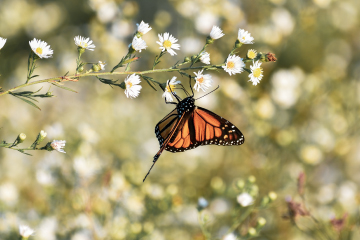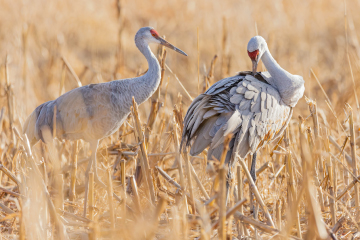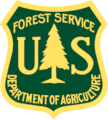October 2018 – February 2019 Update
Rainwater Basin Joint Venture Partnership Update
Spring migration is right around the corner and conditions in the basins look to be as good as ever. We might have the wettest conditions since 2001. If you get a chance, make time to enjoy the greatest migration spectacle in North America. Below is a short synopsis of partnership activities. Please contact the RWBJV office if you have questions or want more information.
Biological Planning & Conservation Design
New Publication Compares Historic and Contemporary Wetland Network Connectivity in the Rainwater Basin: “Effects of large-scale wetland loss on network connectivity of the Rainwater Basin, Nebraska” was recently published in the journal Landscape Ecology. The authors used network models to describe changes in the connectivity of wetlands in the RWB over time and how these changes may affect various wildlife species. The analysis indicated that the average distance between wetlands has increased by 150% to 1.2 km since European settlement. To traverse the entire RWBJV wetland network, a species must have the ability to travel at least 10 km. Results of this study can be used to help guide restoration efforts that will preserve or increase biodiversity levels.
The paper was authored by Drs. Bram Verheijen and Dave Haukos of the Kansas Cooperative Fish and Wildlife Research Unit at Kansas State University and Dr. Dana Varner of the Rainwater Basin Joint Venture. The study was funded by U.S. Fish and Wildlife Service, Great Plains Landscape Conservation Cooperative, and National Science Foundation grants.
Spring Waterfowl Surveys Begin: Our third season of data collection for the spring waterfowl monitoring project began in mid-February. Very low temperatures and repeated snow and ice events, however, have delayed the arrival of migrating ducks and geese in the Rainwater Basin. Our wetland sample contains 337 footprints this year. Based on pre-season field checks, this may be the wettest spring yet, as most footprints held quite a bit of ice cover. The next steps for this project are to complete the survey protocol document, conduct a preliminary analysis using the first three years of data, and seek out funding for next year and beyond.
Study Examines Pollinator Communities in Rainwater Basin Wetlands: The Final Report for the project titled “Influence of Wetland Restoration on Native Pollinator Communities in the Rainwater Basin” is now complete. This study explored pollinator communities in Rainwater Basin wetlands and adjacent uplands in three categories: reference, crop, and restored. Oklahoma State University student Cyndi Park trapped insects and assessed vegetation on selected wetlands in 2014 and 2015. Although many types of insects were found, bees were dominant and foraged more in wetlands than in uplands. Researchers recommend that including more late season upland forbs and a wider diversity of wetland species during restorations would improve habitats for pollinating insects.
The project was funded by the Environmental Protection Agency with additional resources provided by RWBJV partners, especially the Nebraska Game and Parks Commission and USFWS Rainwater Basin Wetland Management District. Please contact ted.lagrange@nebraska.gov with any questions about this project or the final report.
Groundwater Recharge Monitoring: The RWBJV partners continue to make good progress on the West Basin Recharge project. This fall 1,900 acre/ft. of water was delivered to Funk Waterfowl Production Area through recently installed infrastructure. Prior to water deliveries, a complete topographic survey and a soil survey were completed. This data is being incorporated in the groundwater monitoring and planning future restorations.. Funk Waterfowl Production Area was also instrumented with a real-time radar water level monitoring devise to collect real-time data for the recharge monitoring efforts. Additional high capacity delivery infrastructure is being installed at four other Waterfowl Production Areas (Cottonwood, Johnson, Linder, and Victor Lakes). These basins will be ready to receive water deliveries next fall. Monitoring equipment will be installed at these basins this spring and summer so these wetlands can be monitored and incorporated into the recharge study.
Continental Grassland Assessment: The RWBJV is collaborating with eight other Joint Ventures to develop a continental grassland conservation plan. This plan has three different elements with several already completed. The first element is a grassland assessment delineating existing grasslands. Based on this assessment, the Rainwater Basin Joint Venture has approximately 20.7 million acres of grassland of which 19.2 million acres have never been cropped. Based on the time series assessment, the RWBJV has a grassland conversion (loss) rate of 0.71% annually with an average annual protection rate of 10,210 acres. Approximately 3.4% of the undisturbed grasslands have been protected through fee title or easement. Based on this protection rate, by 2200, 20% of the undisturbed grasslands will remain (~4.0 million acres) and all will be under some form of protection. The last element of this project will be a compilation of Joint Venture conservation objectives to highlight the need compared to the current delivery rate. This should help highlight the need to increase delivery if sufficient habitat for desired populations of grassland birds is going to be maintained. Conoco Phillips is supporting this work and will use the plan to help guide their funding towards conservation of grassland birds.
Communication and Outreach
Rainwater Basin Joint Venture Informational Seminar: The 24th Annual RWBJV Informational Seminar was held February 7th at the Ramada Midtown in Grand Island. As always, the planning committee did an outstanding job with the agenda and lining up presenters. The plenary session focused on the revision of the North American Waterfowl Management Plan, specifically the integration of “people” objectives. As part of his talk, Dr. Vrtiska highlighted several new planning tools that can help integrate societal and ecosystem benefits into targeting conservation projects to the best areas for birds and consumptive and non-consumptive users. The concurrent sessions highlighted recent research findings, past on-the-ground projects, and presentations on new conservation programs. All of the presentations will soon be uploaded on the RWBJV website, here.
RWBJV Partnership Updates
Central Platte Natural Resources District Adds Capacity to Support Wetland Easement Programs: Central Platte Natural Resources District has hired three new staff to support NRCS wetland easement programs. Michele Steffen was selected for the Easement Administrative Specialist position. In this role she will provide administrative support for the NRCS Easement Teams in the Central Area. This region generally coincides with the RWBJV Administrative Area. This position will help ensure all paperwork is in place to efficiently conduct management activities and ensure good communication with landowners when questions arise. Michele started February 4th and is located in the Grand Island NRCS Area Office.
Krystal Bialas was selected as one of the Management Specialists that will coordinate with the ACEP Teams to ensure yearly monitoring, management plans, planning paperwork, and on-the-ground management activities are being implemented on NRCS easements. The monitoring and site visits will be designed to increase landowner engagement to maximize their involvement in easement management. Krystal started February 4th and is located in the Grand Island NRCS Area Office. Ele Nugent accepted the other Easement Management Specialist position. Ele will finish her term position with the RWBJV before transitioning into the Central Platte Natural Resources District position. These positions are being supported through a Collaborative Conservation Grant awarded to the RWBJV.
The Nature Conservancy Hires Burn Boss to Support Prescribed Fire Statewide: The Nature Conservancy hired Chad Bladow as a Burn Boss Coordinator in October 2018. Chad has a unique role assisting private and public land managers with implementation of prescribed fire statewide. A majority of his focus is in the Sandhills. In his role, Chad will assist in developing prescribed burn plans, coordinating equipment for burns, and providing necessary training that the partners/landowners need to increase implementation of prescribed fire. Chad is no stranger to this role as he led the Prescribed Fire Training Exchange (TREX) at the Niobrara Valley Preserve for the last four years. This position is jointly funded through a Nebraska Environmental Trust grant awarded to The Nature Conservancy and a National Fish and Wildlife Foundation grant awarded to the RWBJV.
Upper Big Blue Natural Resources District tegrated Water Plan: Upper Big Blue Natural Resources District is developing their Integrated Water Management Plan. This plan is unique in that it focuses on both water quality and water quantity. Rainwater Basin wetlands were identified as a conservation priority based on their critical role in nutrient cycling and groundwater recharge. This designation provides the RWBJV partners with a new funding opportunity. Nebraska Department of Environmental Quality Section 319 funding is dedicated to implementing objectives outlined in Integrated Water Management Plans. Last year one of these grants was awarded to Ducks Unlimited for wetland and watershed restoration of five wetlands in Little Blue Natural Resources District. These wetlands were identified as priorities in Little Blue Natural Resources Districts Integrated Water Management Plan.
Grant Updates
Conservation Collaboration Grant: RWBJV put in a $761,000 grant proposal for education, outreach, management, and contractual services to support NRCS in delivery of ACEP. As part of the grant, the RWBJV will host three Wetlands Symposiums that will focus on wetland function, soils, vegetation, restoration techniques and partner programs. On-the-ground management will be the second element of the grant. To support these actions, the Conservation Collaboration Grant funds will be leveraged with RWBJV partner funds to rehire the RWBJV Habitat Specialist position and provide funding for chemical and mechanical treatments on NRCS easements. The final element of the grant would be providing contractual services to acquire the environmental database surveys, title work, and physical boundary surveys for new tracts enrolled in the ACEP program. This contractual work would support acquisition of 60 easements over the next three years. If this grant proposal is funded, it will result in 4,500 acres of active management and 7,800 acres of new easements.
Working Lands for Wildlife: The RWBJV partners working on the NRCS Working Lands for Wildlife Initiative continue to make great strides with the on-the-ground delivery in the Eastern Sandhills focus area. To date, there are 40,000 acres of conservation activities that have been implemented or are under contract in this focus area. The next phase of this project will be monitoring response and developing decision support tools that can help replicate this conservation success in the best places to benefit priority species. To support these activities the RWBJV was awarded $175,000 in monitoring funds. This includes $100,000 for grouse surveys (U.S. Fish and Wildlife Service – Science Applications and $50,000 Natural Resources Conservation Service – Conservation Effects Assessment Program). The RWBJV was also awarded $75,000 for a cedar inventory through a National Fish and Wildlife Foundation grant.
Nebraska Environmental Trust Grants: The RWBJV has received preliminary approval for two grants that were submitted as part of the 2019 cycle. The “Happy Cows; Happy Wetlands” grant will provide funds to continue the Rainwater Basin Working Lands Initiative. This grant leverages partner funds for grazing infrastructure (perimeter fence, cross fence, livestock water) on private wetlands. This grant also requests funding for two additional portable tub/chute/alley systems that will be managed by Tri-Basin and Upper Big Blue Natural Resources Districts. These units will ensure producers can safely move animals between grass pastures and wetlands and should increase our ability to achieve desired stocking rates.
The other RWBJV grant supports restoration activities for the wetlands associated with the Western Basin Recharge Project. This grant will provide funding to complete restoration activities at Cottonwood, Funk, Johnson, Linder, and Victor Lakes Waterfowl Production Areas. Grant funds will be leveraged with other funds to conduct groundwater monitoring to understand how Rainwater Basin wetlands contribute to groundwater recharge and instream flows in the Platte and Republican Rivers.
















